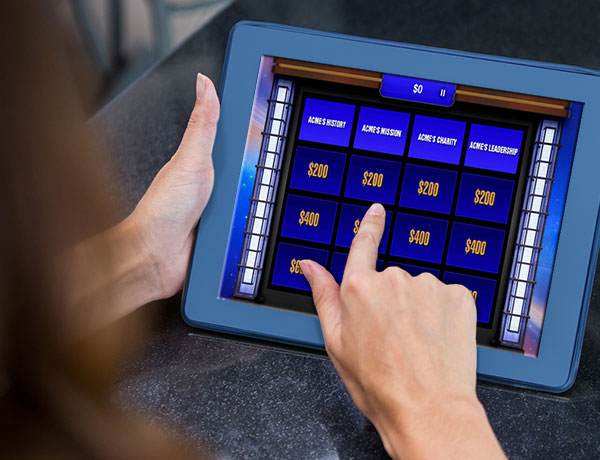Pop quiz! Which state of mind is more conducive to learning?
- Bored
- Tense because the boss is watching
- Relaxed
- Apprehensive
It’s a no-brainer (pun totally intentional)! Many of us have a gut feeling that fun makes learning easier. Is this just a natural inclination to want to play games instead of work, or is there science behind it?
Fun Improves Cognition
There actually is quite a bit of science behind adding fun and games to learning. Here are some examples. Chai M. Tying in “The Influences of Emotion on Learning and Memory” said, “More specifically, mild and acute stress facilitates learning and cognitive performance, while excess and chronic stress impairs learning and is detrimental to memory performance.”
What learning modality sponsors mild and acute stress in the moment? Why games, of course! In “The Neuroscience of Joyful Education,” Judy Willis states, “The truth is that when we scrub joy and comfort from the classroom, we distance our students from effective information processing and long-term memory storage.”
There is a physical link between good cognition and the emotions engendered by an educational game – mild stress caused by the game, plus fun, and even joy.
Real-Life Examples
One famous example of adding fun was created by Volkswagen in the early 2010’s. Using the principle that fun is the easiest way to change people’s behavior for the better, they created a Piano Staircase next to an escalator to encourage people to use the stairs. Here’s another example of a Volkswagen Fun Theory experiment: The World’s Deepest Bin.
These two experiments had real-world consequences – they both changed behavior. By extension, adding games to training might very well have similar results.
The Benefits of Games in Training
Focussing specifically on the benefits of games in training, here are some of the reasons why it’s a great idea to add them.
Health
Playing games releases endorphins that promote a feeling of well-being. Endorphins are released by the hypothalamus and pituitary gland in response to the mild challenge of games, and this group of peptide hormones creates a general feeling of well-being.
Socialization
The foundation of games is both competition and cooperation. Competing and working together are both good for a team, a department, and a company. Games help teams build trust in one another, and encourage collegiality and communication.
Life Lessons
There’s a reason why your mom made you play Little League when you were a kid. Following directions, taking turns, and winning or losing with grace are all lessons that stand a person in good stead for life. The same goes for adding games to training – it’s a great way to build camaraderie and empathy in a work team.
How to Build Fun into Learning
A well-designed game, strategically placed, enhances learning. There are several ways to use games, including introducing content, solving problems, and reinforcing learning.
- Games that have clues like JEOPARDY!® or questions like Match 3 can be used as a pre-assessment to introduce new concepts.
- Games such as Scenarios or Detective can be used to solve problems or present case studies. They are highly effective in soft skills training because they mimic real-life situations.
- Trivia games are also great to reinforce learning that has already taken place. They can also be used as formative assessments in place of drier forms of assessment.
Games have a place in learning; by their nature, they improve cognition and have many benefits for teams and individuals. Our gut feelings are right on – it’s time to start incorporating games into instructional design!


